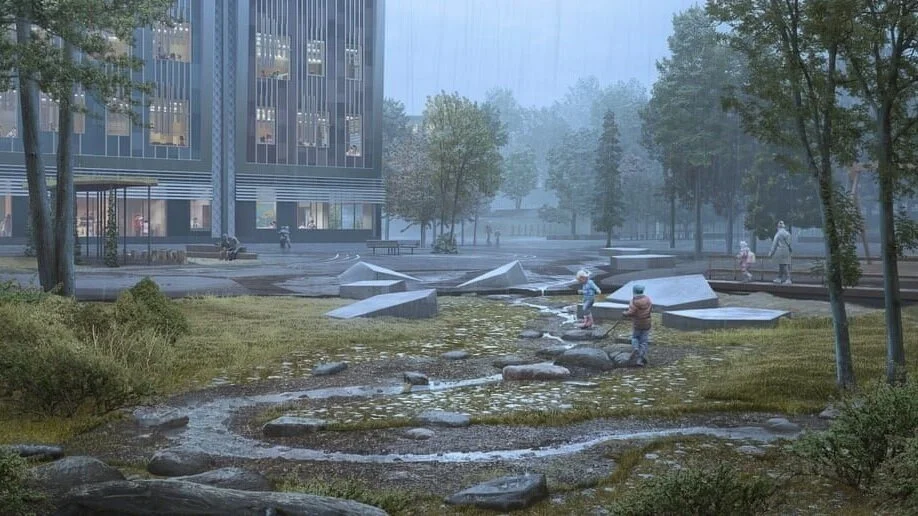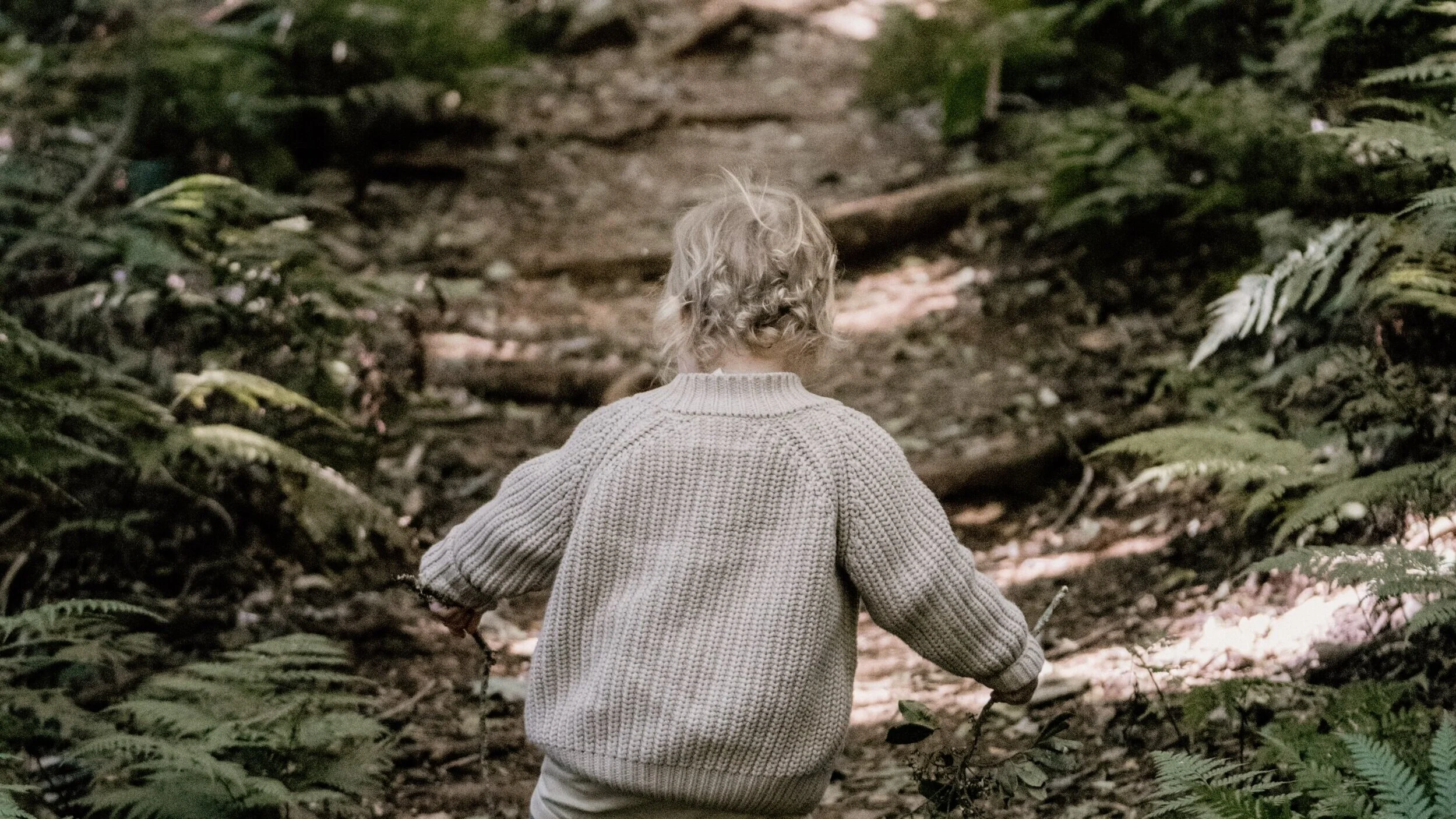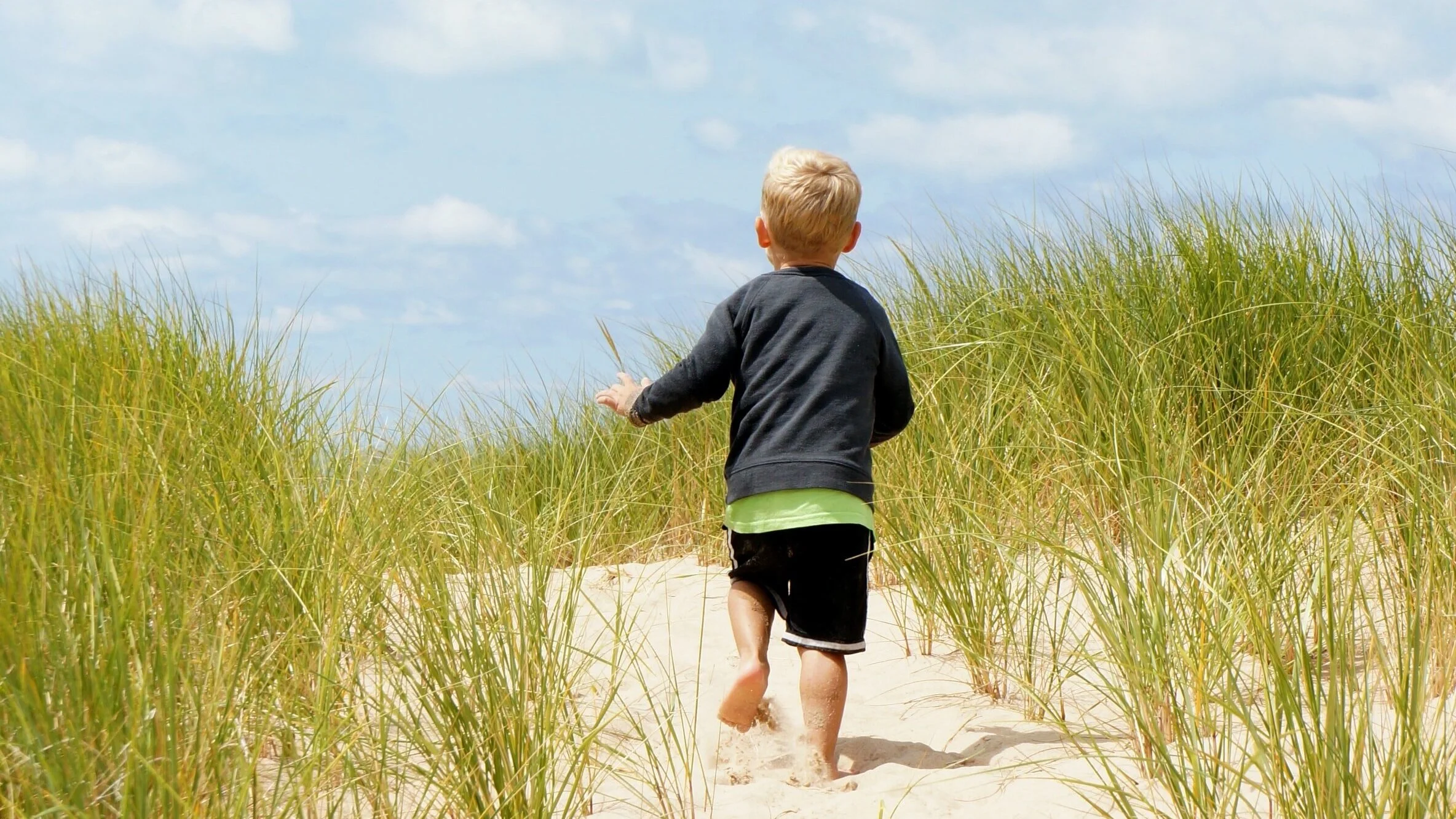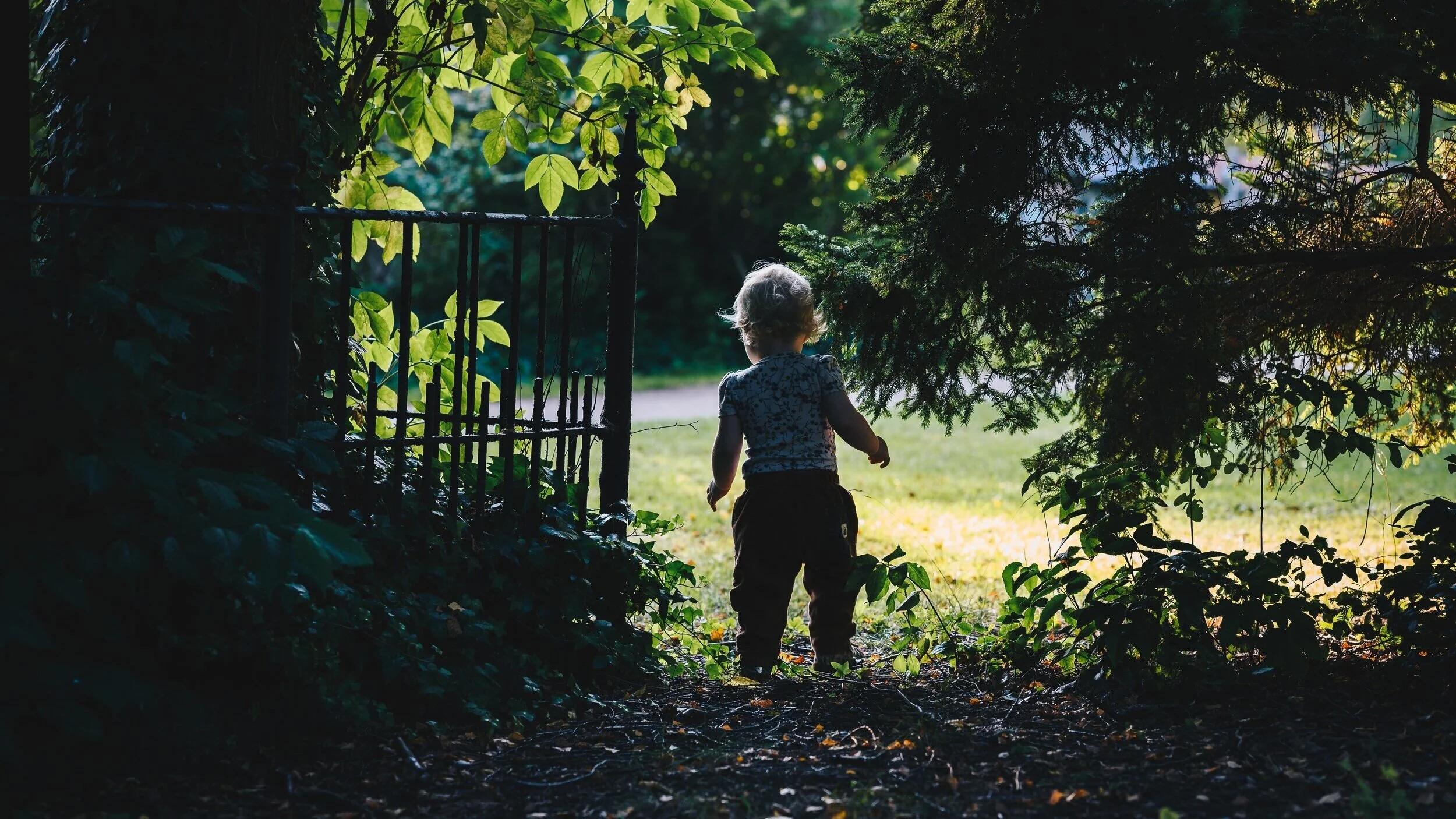Overcoming Common Barriers to Nature Play
May 13, 2021
When I’m talking with parents about nature play and the benefits of it for our children, I often get responses like, ‘Yeah, I know, but it’s really cold and miserable out there sometimes!’ or ‘I want to but my child just runs straight for the lake and jumps in!’ or ‘We live in a city, nature play actually feels impossible.’ And I hear you, all of these concerns are valid - and I used to think the same - until I attended a professional development course on why the outdoors is important for our children when I was an early childhood teacher and the benefits absolutely blew me away. Now as a parent, I prioritise nature play whenever we have the time, even if it’s only for 15 minutes.
So why is getting out into nature with our kids important? Here’s an excerpt from one of Dr. Maya Shetreat’s books that, in my opinion, sums it up perfectly:
“Numerous studies show that exposure to nature and soil enhances mood, cognition and quality of life. Digging in dirt isn’t only fun, it makes your children smarter and happier. Children who spend three hours outdoors daily are much more likely to have perfect vision than kids who spend the same amount of time indoors. The vitamin D that they absorb through their skin from the sun promotes immunity in critical ways that oral vitamins can not fully imitate. Studies show that children who spend recess time in a green environment, rather than on cement or blacktop, subsequently perform better on tests in the classroom.”
I would add to Dr. Maya Shetreat’s wisdom by encouraging you to check the origins of the dirt or soil you offer your children to play so you’re not unknowingly exposing them to a cocktail of chemicals that the soil has been treated with. When Dr. Maya Shetreat references the benefits of three hours of outdoors play a day above, I know many of you will be feeling that’s an impossible target to achieve. I would just like to encourage you to start small, be gentle with yourself and with where you are at in this journey. Anytime in nature is beneficial, don’t write it off because you can’t reach the three hour a day gold standard.
Recently I asked my social media community what their barriers or fears are that are stopping them from exploring nature with their children. I loved the honest responses that came in and below you’ll find my suggestions for overcoming these barriers and getting out there with your children. Before I start, I just want to say that I invite you to take away any points or suggestions that resonate with you for your family, and leave those that don’t.

-
“Cold, miserable weather. It doesn’t stop the kids - just me.”
This is a really common barrier! Unless you live on a tropical island, you are bound to encounter the different seasons in nature which yes, does usually mean some cold days without that glorious sunshine. I know myself, as a predominantly kapha dosha (click here to read more about the Ayurvedic dosha types), I really struggle with cold, wet weather so it has been something I’ve had to be mindful of my language and mindset so I don’t pass this predetermined belief that all wet weather is ‘bad’ or something to avoid onto my son (click here to read how I’m doing this). I’m not suggesting that you take your children outside in torrential rain (unless you and they want to!), but there’s beauty to be seen in a drizzly, wet day - and lots of fun to be had. For example, the way that rain droplets fall on a tree’s leaves or the rainbow that pops out at the end of a rain shower or the mud that’s been freshly brewed just waiting to be explored. The above photo is actually from a Swedish city, Gothenburg, where it rains 40% of the time so they have designed a playground that is particularly fun when it’s wet and rainy. You can read more about this rain-positive approach here. I also encourage the parents that I work with to invest in a waterproof rain jacket for themselves and their children. I understand they can come with a hefty pricetag new, but you can usually pick these locally from a second-hand store, like Wastebusters in Wanaka, or look on Facebook Marketplace or wait for your favourite outdoors store to have a mega sale. The other tip is to wear thermal leggings under your pants (same goes for your children too), this is honestly a gamechanger to enjoying your outdoor adventures when it’s cold and raining.

2. “Confidence going with my 2 & 4 year old and anxiety that I can’t keep track of them both.”
I can completely relate to this concern, when I was teaching and we would do outings with a ratio of one teacher to four children, I would always feel slightly anxious about keeping tabs of other parents’ precious children on the outing. My biggest tip here is to choose your location with this in mind. For example, visiting an area that has open access to a water source might not be the best way to get started and build your confidence if they’re both going opposite ways into the water - that’s a recipe for panic! Instead, if you can, aim to choose somewhere that already has minimised risk, such as a forest or bush area. It might even just be exploring under the trees or gardens at your local park so you know the area is fully fenced. Before you go, I would also have a conversation with your children outlining your expectations by explaining that it’s a very special adventure you’re all going on together. As part of this very special adventure, there are some important rules, such as they must be able to see you at all times, or they must stay together with you while you’re there. You know your children best, so choose boundaries that will work for you all. You may even want to have a bag of goodies that you always take with you too, which could help them initially transition into the space and hopefully encourage them to stay together. Objects like a magnifying glass, an empty bucket, a spade, a container are all ideas to get you started. I would visit the same place each time you go to explore nature, so you all build confidence and belonging with the area and your children know the boundaries that come with the space. This will help to build your confidence as the leader, and also know what risks there are for your children in the space too. It may also be beneficial to team up with another parent who is keen to explore nature and tackle this together so you feel more confident in a pair. You could also research whether there’s a local nature group that explores your local area weekly and see if you could go along as a visitor with your children. I totally get it’s not easy, especially when you have a toddler who is led to explore by their senses so can be on the move a lot and an older child too. I recommend starting slowly, with small adventures, and adjust as you go.

3. “Totally irrational around water. I’m one parent and I have two kids who split ways.”
In regards to the children going separate ways, my advice under point two can be applied here too. When talking about water with children, this is something I’ll never take lightly. I remember watching an episode of Bondi Rescue where a child was involved in a near-drowning incident and the lifeguard ended the rescue with a plead to parents to keep children close enough to cuddle around water at the beach. Additionally, Water Safety NZ says to keep babies and toddlers within arms reach around water. As a Mum, I know that like me, reading this information will be putting you off visiting any natural water sources with your children because we just want to keep them safe at all times right? But I share this with you so you are armed with the knowledge and reality of the risk and so you can do everything you can to mitigate it. This followers concern is around having two children around water who split ways. It’s difficult for me to give specific advice without knowing the personality and more background information about the child like I do with the families I work with in my consults, but I would either recommend having a ‘Special Adventure’ conversation (outlined above) depending on the age of the children so they know to stay close to each other and you, and packing a ‘Bag of Nature Goodies’ (also outlined above) for them to use to explore the water. Their hands are actually one of the best ‘tools’ for this exploration, but by introducing a bag of goodies, it will hopefully boost their engagement and interest in staying together. Or I would wait until you had a friend or family member to come with you so the ratio was 1:1 and you felt more confident with them exploring water freely, with supervision! It’s a fine line between keeping our children safe and offering them the opportunity to explore all of the wonderful benefits natural water play can bring - for adults and children alike.

4.“The stress that bub puts everything in her mouth and runs away. It becomes a lot of work.”
One of the ways that children learn about different aspects of their world is by putting things in their mouth, it’s how they receive the information about the texture, feel, taste of an item. But for parents - it can feel exhausting and an action we need to stop to keep them safe. There are certain objects I do encourage parents intervening with, and that is when your child is wanting to mouth something with chemicals or that is small enough to be a choking hazard, or anything else that is dangerous to their health (please apply common sense here). But when out in nature, our children are actually provided with a plethora of bacteria in the dirt or soil (with traces of soil naturally found on the leaves, grass, trees, rocks) and this diverse bacteria is actually beneficial to their immune systems and strengthens it - instead of the other way round. Hard to believe I know! Dr. Maya Shetreat actually says, “Exposure to microbes, eating fresh, unprocessed food from healthy soil, and spending time in nature are three major things that are foundational for children to be healthy now and for their entire lives.”
The other part of this followers response was that her child always runs away and it becomes a lot of hard work. Young children are generally led by their senses - they see, smell, hear, taste, feel something and they want more information immediately. No, I mean like right now! Which often means they’re off on a mission, driven by this need to investigate life, before we’ve even taken a breath, so outings can become exhausting for us all. For this situation, I recommend finding a nature spot where it is safe for your child to explore and roam without any restrictions. Start by going just you two to begin with, and once you’re there, follow their lead. See what’s holding their attention, allow them to lead you on their adventure so you can see this experience through their eyes. Sometimes as adults we can feel the need to lead an experience like this, but stepping back and allowing them to become the teacher is a way to relax the situation for both of you. If they aren’t interested in exploring the area you’ve gone to, then keep revisiting occasionally and see if their interest changes as they get older, or take them to a variety of environments and see if they prefer one to the other. For now, I would avoid going in groups so you don’t feel frustrated when the group is going one way and your child is exploring in another!

5.“We live in a city and just don’t have time to get out for hikes.”
Living in a city certainly does require more planning for the ‘completely-surrounded-by-tranquil-natural-bush-and-only-bird-life-noises’ nature play, however it is possible to incorporate nature into your day-to-day or week-to-week. Start slowly and build up, or accept whatever time you can invest in this - and know that even a small amount of time will be beneficial. Become really familiar with the location of parks in your city, and especially the parks that include natural vegetation. Research from Richard Louv actually suggests that children, when left to their own devices, are drawn to the rough edges of such parks, the ravines and rocky inclines, the natural vegetation. It might be that you walk home with your kids after school and stop at a park for a play twice a week for half an hour, or it might be that you enrol your child in a local nature exploration group (age-appropriate of course), or it might be planting your own veggies on your balcony or in your backyard if you have one (with a special emphasis on the quality of your soil!), or it might be that you make a family commitment to tick off a new hike every month, or it might be that you bring nature into your home with fallen leaves, sticks, rocks, pinecones, the list goes on! My toddler loves making cups of tea with acorns, pouring them from one cup to another and serving them to me. Whatever it looks like for you and your family, wherever you can fit it in, it’s perfect.
In my consultations with parents, I love providing one-on-one support for building their confidence with nature play - just like I have here. If you’d like support for bringing more nature into your child’s life, you can book here.
